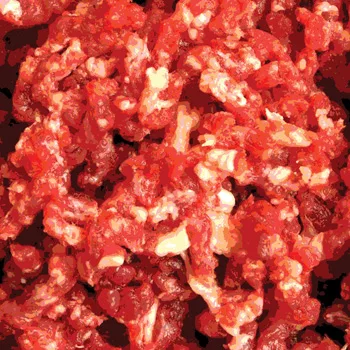Cutting Out the Fat

The last few months have brought unprece-dented attention to lean finely textured beef (LFTB), a product that was unfairly reviled in mainstream and social media as “pink slime.” Some critics have been extreme in their claims, erroneously calling it a filler, an additive or something that was previously used in pet food. While there were a variety of concerns raised about LFTB, at its heart, the main concern among consumers seemed not to be related to food safety, but to perceived deception. There was no intention to hide the product, and makers regularly talked about it to the media. The Washington Post carried a 2008 Business Section cover story with the headline “Engineering a Safer Burger” that featured one of the makers. The same company appears in a high profile film about the U.S. food supply.
Still, the storm that played out in the media and social media space offers a forecast of things to come and the need to respond swiftly, effectively and frequently about meat processing.
What Is LFTB?
At a basic level, LFTB is no different from any other meat removed from a beef animal. It’s beef. But conversations with reporters and consumers made clear that consumers perceive that all meat is removed from carcasses by a few cuts from a knife. Of course, the reality is, meat comes from muscle and muscle can be connected to bone and fat. Depending on the location of the muscle, removing it can present varying degrees of challenge. In the case of LFTB, the meat starts with trimmings, which are small cuts of beef with fat attached that are not connected to a bone. To separate the meat from the fat, the trimmings are warmed to about 100 °F, which is approximately body temperature. The trimmings are placed in a centrifuge so the fat is liquefied and spun away, and the lean meat remains. At this point in the process, a food safety intervention is applied to destroy any pathogenic bacteria that may be present. This intervention is classified as a processing aid. The U.S. Department of Agriculture (USDA) considers processing aids to be substances that are present in a meat or poultry product in an insignificant amount that do not and have no functional or technical effects in the finished meat or poultry product. Examples of processing aids used during the production of LFTB include citric acid and ammonia. The resulting beef product is about 95 percent lean protein but also has a finer texture than typical ground beef. For these reasons, LFTB is not sold as a stand-alone product. Instead, LFTB is added to raw ground beef typically at a ratio of 5–15 percent.
Why LFTB Is Beneficial
There are several benefits to using LFTB in ground beef. Consumers demand a lean beef product, and LFTB allows processors to make lean ground beef blends that are affordable. Using ammonium hydroxide or citric acid to destroy bacteria provides added safety. USDA data show that the incidence of E. coli in fresh ground beef has been declining significantly over the past decade. The number of USDA ground beef samples testing positive for E. coli O157:H7 dropped 55 percent between 2000 and 2010. LFTB products have been a part of that success story.
Finally, all types of LFTB are sustainable products because processors recover lean meat that would otherwise be wasted. The beef processing industry is proud to produce beef products that maximize as much lean meat as possible from the carcass. It’s the right thing to do and it ensures that our products remain as affordable as we can make them while helping to feed America and the world.
If LFTB is not used in fresh ground beef products, approximately 1.5 million additional head of cattle would need to be harvested annually to make up the difference, which is not a good use of natural resources, or modern technology, in a world where red meat consumption is rising and available supply is declining.
Moving Forward
Many supermarkets have pulled ground beef with LFTB off the shelves due to consumer reaction to news reports and social media activity. LFTB has not historically been distinguished from beef on a label because USDA classified LFTB as beef. However, USDA recently announced that it would approve labels (USDA actually approves all labels before they are applied) that declare LFTB when it is used, so LFTB may soon be available again in labeled packages. The future of LFTB will be determined by whether consumers accept it with a label.
Ground beef with LFTB will likely be around 10 cents per pound cheaper than ground beef without it. In tough economic times, that may be enough to bring consumers back. If not, it will likely mean the loss of a safe, wholesome product that has been given an unfortunate nickname.

Eric Mittenthal, M.S. is vice president of public affairs at the American Meat Institute. (AMI) based in Washington, DC. He came to AMI from the International Food Information Council where he led their efforts in communicating with journalists and bloggers and also managed the FoodInsight.org blog. Eric graduated from Cornell University in Ithaca, NY with a B.A. in psychology. He also received a M.S. in biomedical sciences from Eastern Virginia Medical School in Norfolk, VA.
Looking for quick answers on food safety topics?
Try Ask FSM, our new smart AI search tool.
Ask FSM →








